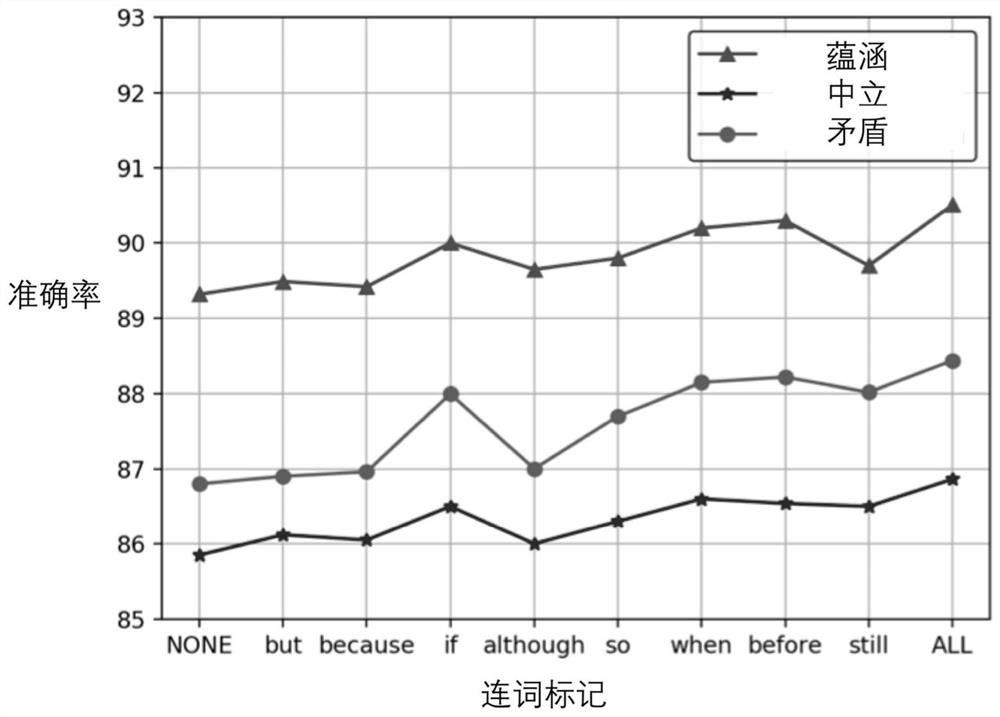A method for natural language inference based on conjunction tagging and reinforcement learning
A natural language and reinforcement learning technology, applied in inference methods, neural learning methods, semantic analysis, etc., can solve problems such as the inability to achieve good results with large-scale data sets, and achieve the effect of improving accuracy
- Summary
- Abstract
- Description
- Claims
- Application Information
AI Technical Summary
Problems solved by technology
Method used
Image
Examples
Embodiment Construction
[0043] The specific embodiments of the present invention will be described below with reference to the accompanying drawings, so that those skilled in the art can better understand the present invention.
[0044] like figure 1 As shown, a natural language inference method based on conjunction tagging and reinforcement learning includes the following steps:
[0045] S01, train a simple conjunction prediction model on the conjunction prediction task. We use BookCorpus, a large-scale comprehensive corpus, as the training set, and the preprocessed dataset is in the form of (sentence 1, sentence 2, conjunction markers). Our task is to, given sentence 1 and sentence 2, predict the conjunctions that were originally used in the corpus to connect them. like figure 2 As shown, when performing the task of conjunction prediction, we use the existing word vector Glove to make word embeddings for sentences, and then send them into a bidirectional long-term memory network (encoder). We ...
PUM
 Login to View More
Login to View More Abstract
Description
Claims
Application Information
 Login to View More
Login to View More - R&D Engineer
- R&D Manager
- IP Professional
- Industry Leading Data Capabilities
- Powerful AI technology
- Patent DNA Extraction
Browse by: Latest US Patents, China's latest patents, Technical Efficacy Thesaurus, Application Domain, Technology Topic, Popular Technical Reports.
© 2024 PatSnap. All rights reserved.Legal|Privacy policy|Modern Slavery Act Transparency Statement|Sitemap|About US| Contact US: help@patsnap.com










